What Are Freshwater Pearls? Everything You Need to Know
-11-1140x300w.jpg)

Though freshwater pearls are common mystic stones, the charming characters amaze pearl enthusiasts. Versatile colors and unique shapes trend these pearls as a staple jewelry option.
While embracing classic elegance, freshwater pearl suits the designs of fanciful jewelry. Two mussel species are the primary source, cultivated in rivers, lakes, or wetlands. With lustrous shine and affordable price, freshwater pearls dominate the jewelry market. Whether worn as a necklace, pendant, or earring, these pearls give a bold and distinctive look.
Want to dive deep into the freshwater pearls? Scroll through our guide to understand the source, formation, properties, and worth.
Where Do Freshwater Pearls Come From
-2.jpg)
Freshwater pearls are produced by various mollusks by natural or cultured processes. Let's dig into the pearl sources in detail.
Natural vs. Cultured Freshwater Pearls
-3.jpg)
The formation process is similar in natural and cultured pearls. Only the use of an irritant or initial nacre secretion process causes differences.
Natural freshwater pearls are created through an accidental irritant without human interaction. In contrast, the pearl farm inserts tiny bead irritants to culture freshwater pearls.
Only a skilled pearl farmer and technician can complete the insertion process. Deep pearl knowledge and experience produce a high-quality pearl. Yet, the secretion process starts once the oyster or mussel feels the irritation.
Mollusk Species
-4.jpg)
Cuming's mussel (Hyriopsis cumingi) is the principal freshwater pearl source in most regions. It is a dominant commercial species in China and Japan due to its wide range of pearl colors and shapes.
Biwa shell (Hyriopsis schlegeli) is cultured in rivers or lakes in Japan or the United States. Genetic adaptation takes the freshwater farms to countries in Europe and Australia.
Brief History
-5.jpg)
Natural freshwater pearls played a classic role in ancient cultures. It was used as a luxurious symbol for elite society in many empires. Freshwater pearl jewelry was traced in 206 BC - 220 AD as Chinese royals used in the burial ceremony. Only the elite society got access from the Renaissance to the Victorian period. They used freshwater pearls as a token of power and royalty.
Freshwater pearl cultivation started in 1980 by using nucleated tissue in China. Cereals like pearls with surface wrinkles were used in necklaces or bracelets. Due to better culturing techniques, pearl shapes became potato or oval in the next decade.
Cultured pearls with solid nacre rocked the jewelry market. The freshwater pearl bloom called off at the end of the 90s. In the early 20s, cultured freshwater pearls became the classy competing option.
How Are Freshwater Pearls Made
-6.jpg)
Pearl formation varies depending on types of irritants, mollusk, and climatic conditions. Let's dive into the freshwater pearl formation process.
Pearl Creation Process
-7.jpg)
Organic material or tiny beads work as an irritant in freshwater mussel. Even the mussels are found in freshwater rivers, lakes, and wetlands. Once the mussel faces an irritant, it secretes a layer around the core to form the pearl. Freshwater pearls offer a more comprehensive range of sizes and shapes for jewelry.
In contrast, a bead nucleus, made of shell material, works as an irritant in saltwater oysters. White, Akoya, and Black-lipped oyster species produce pearls in coastal and marine environments. When the irritant implants, it stimulates the nacre secretion around a bead nucleus. As a result, pearls become round shapes with luminous luster.
Cultivation Method
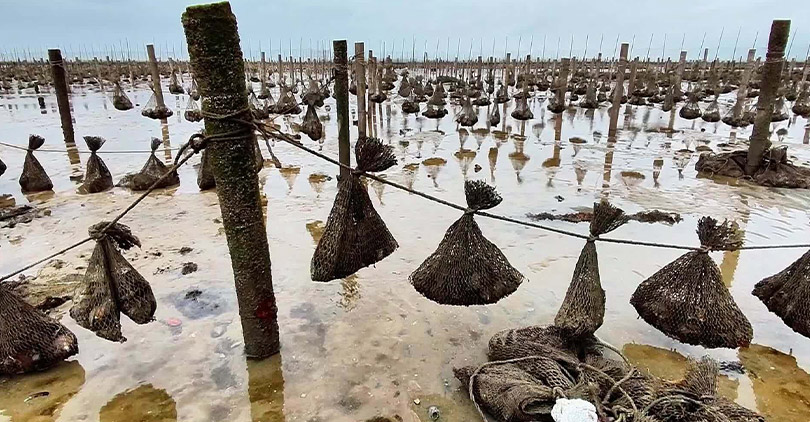
The cultivation process starts with selecting freshwater mussel species. After a close inspection, pearl farmers pick healthy ones. Once pearl farmers select suitable pieces, a natural irritant implants into the mussels.
Farmers placed mussels in rivers and lakes in cages or nets to prevent predator attacks. The mussels are kept in water for 2 to 5 years to get the desired size and better luster. They check the mussel's health and water condition throughout the cultivation process.
During harvesting, farmers extract pearls using a shell opener. Finally, clean the pearls with fresh water and sort them by size, shape, and color. Using modern farming tools and advanced sensors, maintain optimal mussel conditions. Yet, water temperature, pH level, and nutrient availability impact pearl cultivation.
What Is Special about Freshwater Pearls
-9.jpg)
Freshwater pearls are a diverse shape, color, size, and luster source. Let's explore these unique traits in detail.
Shape and Color
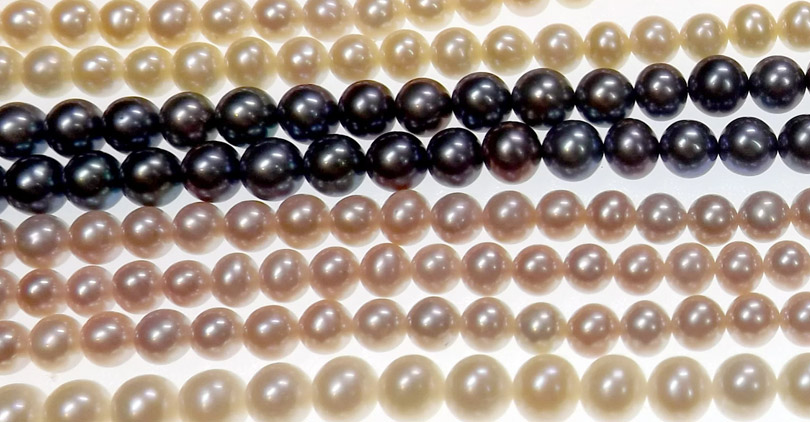
Freshwater pearls offer shape diversity due to the natural forming process. Perfect round shapes with few imperfections are the rarest, only 1-2% of the harvest. Irregular shapes, including buttons, drops, or Keshi, are unique options for freshwater jewelry.
While embracing colorful taste, freshwater pearls include white, pink, lavender, or peach colors. Due to variations in rose, silver, or cream tones, these colors can warm up any jewelry. Lavender color reflects the light, whereas peach covers rare color combinations. Hence, the color range can match any skin tone, becoming an essential part of the jewelry wardrobe.
Size and Luster
-11.jpg)
Though pearl size depends on the cultivation period, freshwater pearl ranges from 2.5 to 16 mm. Pearls over 11 mm in diameter are valuable and rare for statement jewelry. Giant pearls are scarce even if the mollusks are grown for a more extended period. Using modern breeding techniques, China produces 14-16 mm freshwater pearls.
Freshwater pearls have a mirror-like finish with sharp reflections. The finest pearls offer a clear, bright, and deep glow. In contrast, the lower luster appears dull with surface imperfections. The faster nacre layering process causes a soft and dewy luster.
Durability and Strength
-12.jpg)
Pearl’s durability and strength depend on the thickness of the nacre. Due to the aragonite and conchiolin, freshwater pearls offer a thick and robust nacre.
Besides, freshwater pearls can withstand any hard impact or crack. Even the thicker pearl nacre is less prone to surface damage or abrasive contact. Further, take care of the pearls and clean them to enjoy years of durability.
Freshwater Pearls vs. Other Types of Pearls
-13.jpg)
Rather than freshwater, saltwater, natural, or shell pearls also dominate the jewelry market. Let's take a look at these pearl options.
Saltwater Pearls
-14.jpg)
Saltwater pearl farmers use a spherical bead nucleus as an irritant. Hence, these beads result in round or semi-round pearls. Oysters in salty bays and lagoons make cultivation challenging. Thus, the rarest saltwater pearls bear the most expensive statement jewelry options.
Pearl enthusiasts seek luminous luster, smooth finish, and perfect shapes. Saltwater pearls offer these traits with an array of colors to your attire. Black, golden, blue, white, or green colors create an artistic realm in the jewelry world. Countries like Japan, Australia, Thailand, and Indonesia produce saltwater pearls.
Natural Pearls
-15.jpg)
Due to natural irritant encounters, natural pearls are scarce to find. Besides, long growth periods and over-harvesting destroy oyster species. Oyster encounters foreign substances like sand grains or parasites to stimulate nacre formation. With proper water and climatic conditions, these oysters take 2 to 6 years to form pearls.
The depletion of oyster habitat impacts pearl cultivation, contributing to rarity and value. In contrast, freshwater oyster farms produce tons of mystic stone. Hence, these farms offer pearl options that are less expensive than natural ones. As a result, these pearls give various options and great value, taking over the jewelry market.
Shell pearl
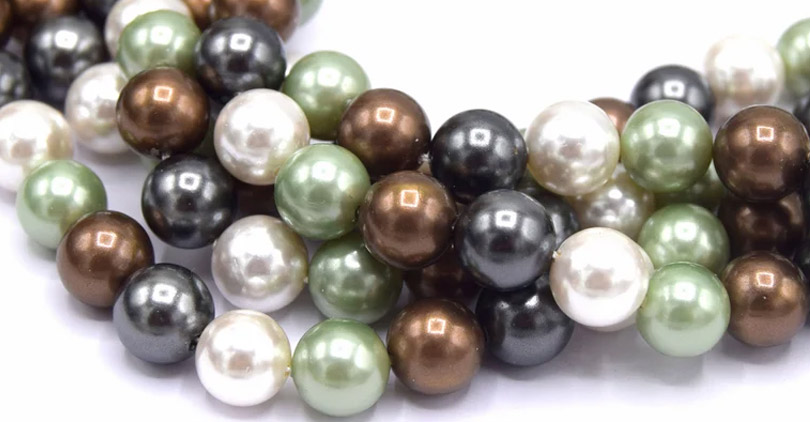
Shell pearls use inner oyster shell lining with a polished coating. Pearl artisan cut oyster shells into cubes and convert pieces into round shapes. GIA states a nacre substance with shiny material creates a protective outer layer.
Due to natural base ingredients, shell pearl jewelry adds an authentic feel to any outfit. Though the beads become round, the surface finishing is abysmal. Using oyster shells withstand hard impacts and tolerate body oils.
Further, these pearls use dyes to give deeper color and darker shades. Yet, the lack of overtone and orient sheen results in poor luster. Also, these artificial dyes can cause severe allergic issues to sensitive skin.
How Much Are Freshwater Pearls Worth
-17.jpg)
Freshwater pearl pricing changes with pearl quality, grading factors, and fashion trends. Let’s take a look at grading in detail.
Common Price Ranges
Though pearl price depends on various factors, a standard range draws better pictures. If you’re picking stunning freshwater pearl earrings, it can cost $50 to $500. The price range for an exotic pearl ring is around $40 to $400. Even a classic freshwater pearl pendant with lustrous shine can cost $100 to $600.
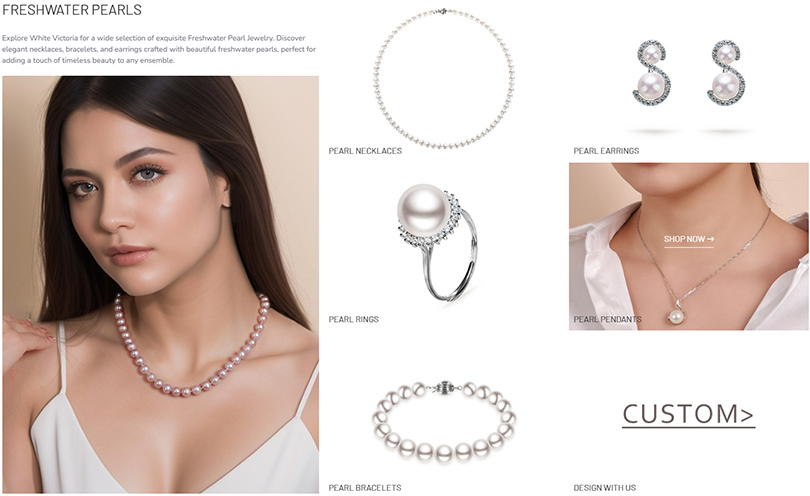 Shop Now
Shop Now
Also, freshwater strands are expensive as the pearl count impacts the cost. A regular pearl bracelet strand costs $80 to $500, while a statement piece costs $100 to $1000. Freshwater pearl necklaces start with a range of $200-$250 and go up to $5000.
Pearl Grading Systems
-19.jpg)
The freshwater grading system covers size, shape, color, surface quality, and luster. With a 95% clean surface and excellent luster, AAAA grade possesses the top 3% of pearl harvest. As per Pure Pearl, a sharp reflection, satin edges, and round shape include the top 2% AAA grade pearls.
Freshwater pearls with 5-10% blemish rate, off-round to oval shape, cover AA+ grade pearls. Visibly off-round with a 20% blemish rate and blurred edges cover the top 10% AA-grade pearls.
Further, blurry reflection, poor luster, and up to 50% blemishes lead to A-grade pearls. Pick AAAA-grade freshwater pearls if you want sharp, bright luster with no inclusions.
Market Trends
-20.jpg)
Market demand for particular grade pearls influences the price range of freshwater pearls. Besides, fashion trends or jewelry styles change the price range. These trends balance supply chains and pearl availability in the market.
In contrast, Genz's cultural shifts and artificial choices outpace pearl jewelry demand. Even celebrity movements on ethical sourcing or safe sea influence demands. As a result, the price of freshwater pearls shows a quick rise or fall in the market.
Where to Buy Freshwater Pearls
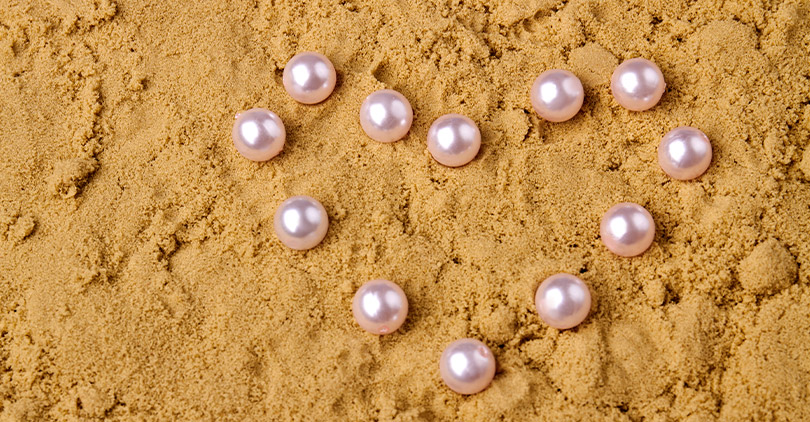
Freshwater pearls are available in online retailers, offline stores, and pearl markets. Let's dig into the best source to pick the pieces that interest us.
Online Retailers
-22.jpg)
Jewelry enthusiasts are in a hurry to find trendy designs and modern styles. Whether necklaces, pendants, or rings, online retailers like White Victoria offer endless options. Due to 100% authentic designs, these stores serve the best options and market pricing.
Moreover, retail stores offer customizable freshwater pearl jewelry options. If you're looking for a unique style, these retail stores have the pieces you want. Even a preferable length helps to suit your neckline and improve your style. Hence, scroll through our White Victoria to get trendy pearl jewelry pieces for you.
Brick-and-Mortar Stores
-23.jpg)
While looking for eye inspection, upscale brands or local stores can hold you back. Besides, these stores give access to inspect the pearl quality. These stores help you to feel the mystic jewelry and verify the design. The pearl shop experts can suggest any attire's desired style or jewelry setting.
Reputed stores keep a certificate of authenticity, which helps customers to trust quality. As a result, you can verify the pearl source, and chances of fake or artificial pearl decreases.
Pearl Markets
-24.jpg)
Few pearl markets offer exceptional quality with thousands of variations. These markets are the boss, whether about the rarest size, shape, color, or luster. Even direct dealing with the pearl farm leads to authentic mystic pieces of the best value. Also, hundreds of pearl stores keep pricing competitive with fresh stocks.
Further, pearl markets give the feel of pearl's rich tradition and cultural impact. Hence, visiting these markets grows your interest in traditional aspects. Avoid fraud or faux stores, as many vendors use pearl markets to fool people with fake pieces.
Things to Consider In Purchasing
-25.jpg)
Before spending money, check the authenticity to reduce the chance of fake pieces. First, check for a certificate of authenticity to pick the original pearl. Second, some stores offer return policies allowing customers to check the pearl's quality.
If you want authenticity clarification, visit experts for advice. With years of knowledge, they can help you to avoid fake or artificial pearls. We suggest visiting a store that provides a quality guarantee for years.
What Do Freshwater Pearls Symbolize
-26.jpg)
Freshwater pearls symbolize purity, wisdom, integrity, and divine beauty. Let's dive into cultures and healing properties.
Cultural Significance
-27.jpg)
Though saltwater pearls dominated over time, freshwater pearls were traced in 206 BC - 220 AD. Atolea states the Chinese royals used freshwater pearls in the burial ceremony.
During the Renaissance, elite society used pearls to symbolize power and royalty. The trend of classy and statement jewelry pieces worn through the Victorian period. In 17-18th Century Rome, pearls were considered as the tears of God. They believed these tears carried divine energy and purity.
Freshwater pearls with wide colors and shapes showed dominance at the end of the 90s. In China and Japan, people wear freshwater pearls at weddings. It symbolizes purity, innocence, and commitment to such lovely events. Further, freshwater pearls have recently adapted to the latest trends and unique styles. As a result, these pearl jewelry started to rock the gemstone market.
Healing Properties
-28.jpg)
Over a century, the freshwater pearl was considered a source of divine energy and purity. Crystal healing promotes emotional balance by reducing or soothing anxiety in daily life. Hence, the mystic elements enhance divine feminity and encourage self-discovery.
In contrast, the healing aspect of freshwater pearls brings cleanliness to mind. Due to nurturing qualities, these pearls relieve mental stress with calmness and relaxation. Traditional belief covers wearing freshwater pearls boosts women's fertility and heals menstrual issues.
How to Care for Freshwater Pearls
-29.jpg)
Body oils, chemicals, or improper handling can damage delicate freshwater pearl surfaces. Let's dig into the care guide to get years of longevity.
Maintenance Tips
-30.jpg)
Clean pearl pieces with a dry cloth after every use to avoid color fading or cracking. Wiping the chemical traces avoids discoloration or stretching of your colorful pearl strand. WikiHow suggests wearing jewelry after 5-10 minutes of using spray or makeup products.
Further, store freshwater pearl pieces in separate boxes to avoid scratches with metals. Avoid plastic bags or sealed pouches, as pearls need to breathe and remain hydrated. Store in the original jewelry box on a long trip to avoid damage.
Longevity
-31.jpg)
While stacking or layering pearls, avoid contact with metals to prevent damage. If you wear pearls in the office, bracelets or rings may open to hard impact. Besides, remove pearls before taking a shower or doing household chores. Hence, always care for pearl jewelry for decades of longevity and lustrous shine.
Conclusion
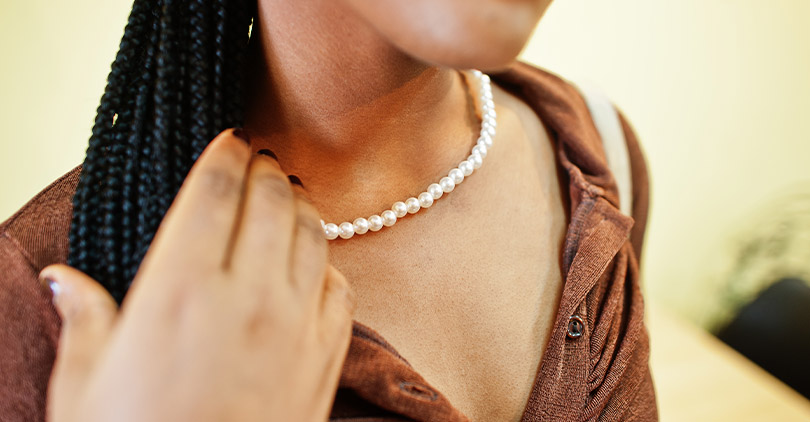
Versatile color and luster make freshwater pearls an incredible option for jewelry wardrobes. With rich culture, charm, and divine energy, these pearls become a part of special events.
Whether worn as necklaces or bracelets, the array of colors offers an artistic realm of shine. So, visit White Victoria for the finest freshwater pearl pieces and get a classy vibe on any occasion.


Leave a Comment